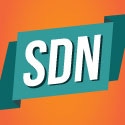AT&T's John Donovan said that Network On-Demand is delivering a reduction in provisioning times of up to 95% for its customers in its first 100 cities.

AT&T has had its SDN-enabled Network On-Demand service live for less than a year, but it's already yielding impressive results, including a reduction in provisioning cycle times of up to 95%, according to the carrier's network boss.
Speaking at AT&T Inc. (NYSE: T)'s analyst conference on Wednesday, John Donovan, senior executive vice president of technology and network operations, said that Network On-Demand is available in more than 100 markets and is "driving up to 95% improvement in our provisioning cycle times and getting rave reviews."
Network On-Demand is the carrier's SDN-powered Switched Ethernet network topology that lets enterprise customers increase or decrease bandwidth in near real-time. Donovan said it went from an idea to trials in only six months, launching at the end of last year in Austin and reaching 100 markets by April of this year. (See SDN Powers AT&T's Rapid On-Demand Expansion and AT&T Brings User-Defined Network to Austin Businesses.)
The idea behind Network On-Demand is for enterprises to realize cost savings and efficiencies from never using more bandwidth than they need. According to Donovan, the Network On-Demand processes have resulted in a reduction in the time spent ordering, managing and changing services by up up to 95%.
"We have taken a process from low automation and weeks to complete to high automation and minutes to complete," he said. "We’re turning the industry on its head in an unprecedented way."
For more on AT&T's SDN initiatives, visit the dedicated SDN content section
here on Light Reading.
AT&T has been a first mover in the transition to a New IP network, as well as a clear leader in implementing SDN and NFV technologies within its own organization and for its customers. Donovan said this has been a necessary move for it "Moore's Law no longer works" for AT&T and networking can't keep up with the growth in traffic. (See Donovan Touts AT&T's Software Push.)
"Our case for SDN is simple -- it's compounding Moore's Law to meet these demand curves with scale, flexibility and cost efficiency that only a software-based architecture can accommodate," Donovan said. "That software architecture naturally takes advantage of the hardware cost curves."
In fact, Donovan said that AT&T actually managed to stretch beyond the parameters of Moore's Law during the past four years by reducing the cost per megabyte by 87% (from 2010 to 2014), whereas Moore's Law principles alone would have resulted in an 83% reduction.
He attributes this feat to SDN, which has enabled AT&T to accelerate its services lifecycle, implement changes more quickly and, importantly, reduce internal costs. (See AT&T Reveals Audacious SDN Plans and AT&T Seeks Help on Culture Change Issues.)
The carrier has vowed to virtualize and control more than 75% of its network by 2020, with the first and most important 5% occurring this year. (See AT&T Touts Its First Virtualized Functions and AT&T Touts SDN Push, Seeks Talent.)
Donovan said he also wants to evolve to an open-source software approach. Today, AT&T uses about 5% open-source software, but it will move to more than 50% in the coming years. That entails virtualizing physical equipment and using less expensive, commoditized hardware to be more flexible and efficient in meeting customer demands.
"The network is on-demand, the office is mobile and the cloud is secure," Donovan said. "We've made it clear that the future of our network, and frankly our company, is in software."
— Sarah Thomas, 

 , Editorial Operations Director, Light Reading
, Editorial Operations Director, Light Reading
About the Author(s)
You May Also Like











